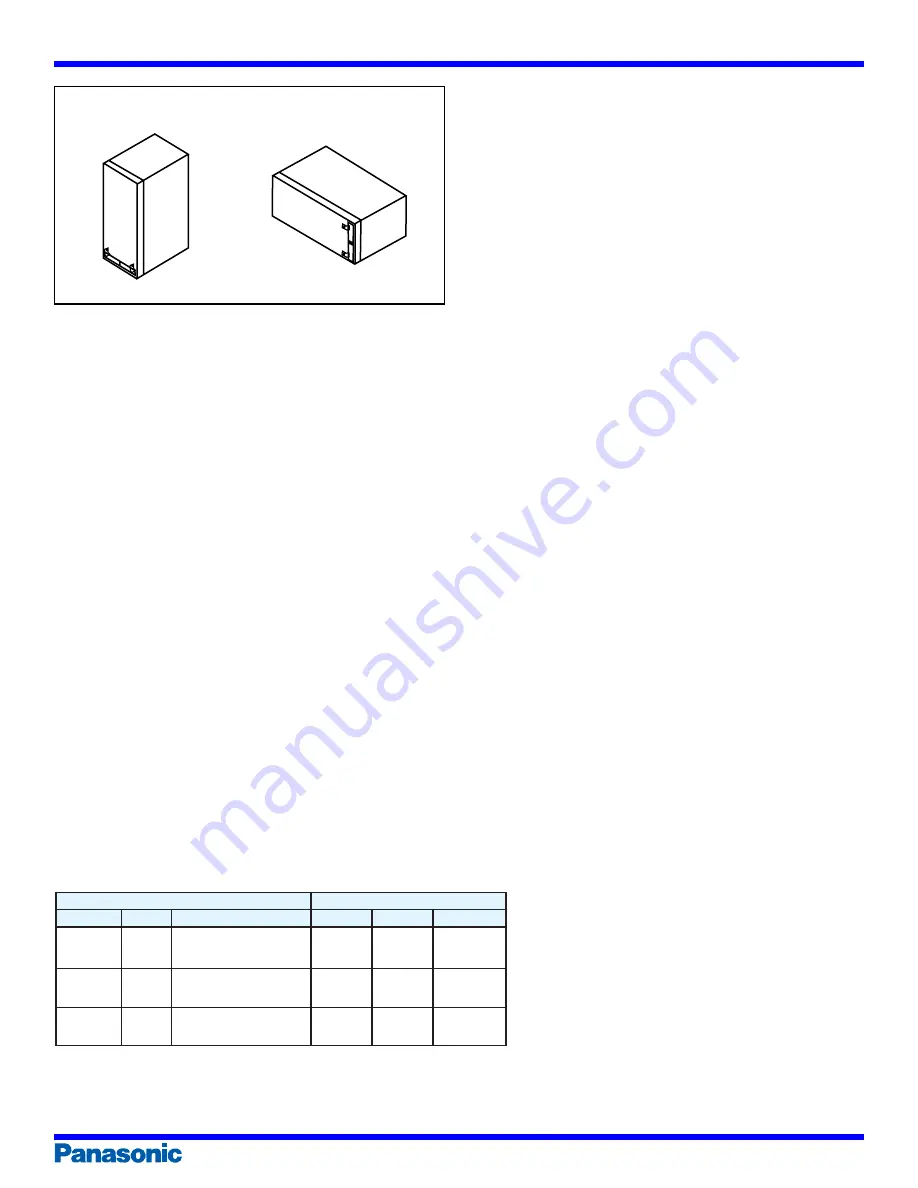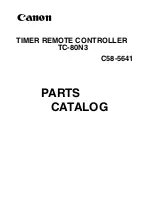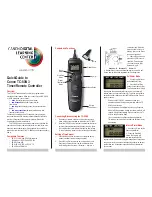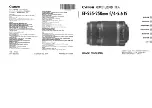
VRLA BATTERIES
AUGUST 2003
This information is generally descriptive only and is not intended to make or imply any representation, guarantee or warranty with respect to any cells and batteries. Cell and battery designs/specifications are subject
to modification without notice. Contact Panasonic for the latest information.
PRECAUTIONS FOR HANDLING VALVE-REGULATED LEAD-ACID BATTERIES-
CONT.
(3) Do not carry the battery by hanging it from the
terminal or the lead wire, as it may cause damage
to the battery.
(4) When carrying the battery, exercise caution not to
apply a strong shock to it by dropping it, jarring it
or causing it to collide with other objects, as this
may cause damage to the battery.
(5) Do not underestimate the weight of the battery. As
it is heavy for its volume, careless handling of the
battery may cause backache or other injuries to
the operator.
(6) Do not bring covered wires containing plasticizer
or non- rigid PVC sheets in contact with the
battery. Do not apply organic solvents such as
paint thinner, gasoline, kerosene and benzene or
liquid detergents to the battery. When brought in
contact with these materials, the battery case
may crack, causing leakage of the battery.
(7) Do not cover the battery with a material which
generates static electricity, such as a PVC sheet.
A static charge may trigger fire or explosion
(8) In fastening bolts and nuts of the battery, observe
the torque values specified: otherwise, sparks
may be generated and damage of the terminal
may occur. The fastening torque of bolts and nuts
is as follows:
Pa
na
so
nic
(Vertical position)
(Horizontal position)
P
a
n
a
s
o
n
ic
RECOMMENDATION
(1) The battery and/or equipment should be installed
by skilled personnel (specialists) such as personnel
qualified for maintaining battery equipment. Handling
of the battery by unskilled personnel may lead to
dangerous errors.
(9) Apply insulation covers to terminals, joint parts,
bolts and nuts of the battery in order to prevent
electric shocks to personnel.
(10) When intending to use the battery in vibrating
equipment such as motor cycles, engine driven
bicycles and engine driven grass shears, please
consult Panasonic in advance.
(11) Fasten the batteries firmly to the equipment to
avoid the influence of vibration and/or physical
shock.
Bolt (nut) size (mm)
Fastening Torque
Diameter
Pitch
Length
Nm
kg. cm.
lb. In.
M5
1.197(5)
M6
0.236(6)
M8
0.315(8)
0.031
(0.8)
0.039
(1.0)
0.049
(1.25)
0.591 ± 0.039
(15 ± 1)
0.7870.039
(20 ± 1)
0.7870.039
(20 ± 1)
2.0 ~ 2.9
3.9 ~ 5.4
7.8 ~ 9.8
20 ~ 30
40 ~ 55
80 ~ 100
17.3 ~ 26.0
34.6 ~ 47.6
69.3 ~ 86.6



























